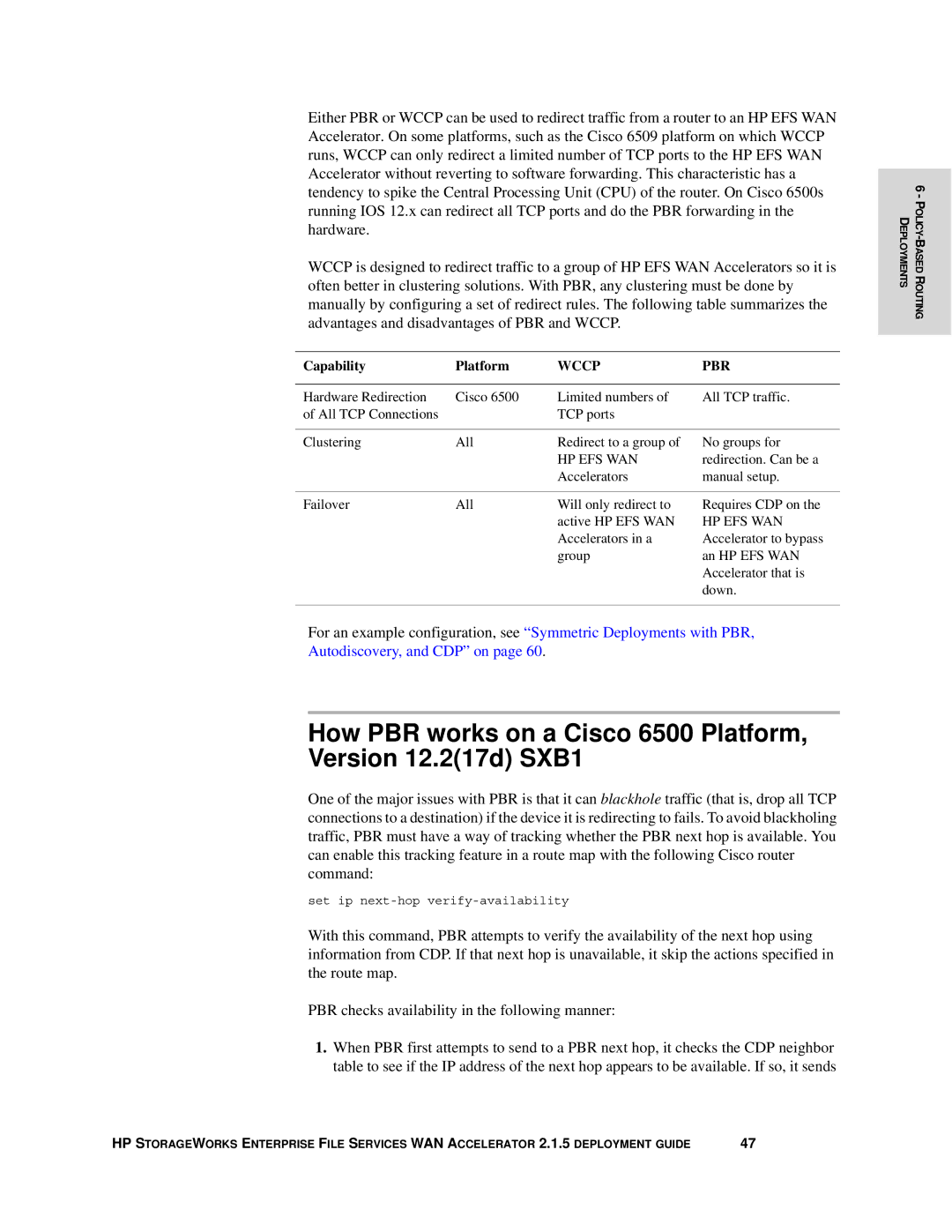
Either PBR or WCCP can be used to redirect traffic from a router to an HP EFS WAN Accelerator. On some platforms, such as the Cisco 6509 platform on which WCCP runs, WCCP can only redirect a limited number of TCP ports to the HP EFS WAN Accelerator without reverting to software forwarding. This characteristic has a tendency to spike the Central Processing Unit (CPU) of the router. On Cisco 6500s running IOS 12.x can redirect all TCP ports and do the PBR forwarding in the hardware.
WCCP is designed to redirect traffic to a group of HP EFS WAN Accelerators so it is often better in clustering solutions. With PBR, any clustering must be done by manually by configuring a set of redirect rules. The following table summarizes the advantages and disadvantages of PBR and WCCP.
Capability | Platform | WCCP | PBR |
|
|
|
|
Hardware Redirection | Cisco 6500 | Limited numbers of | All TCP traffic. |
of All TCP Connections |
| TCP ports |
|
|
|
|
|
Clustering | All | Redirect to a group of | No groups for |
|
| HP EFS WAN | redirection. Can be a |
|
| Accelerators | manual setup. |
|
|
|
|
Failover | All | Will only redirect to | Requires CDP on the |
|
| active HP EFS WAN | HP EFS WAN |
|
| Accelerators in a | Accelerator to bypass |
|
| group | an HP EFS WAN |
|
|
| Accelerator that is |
|
|
| down. |
|
|
|
|
For an example configuration, see “Symmetric Deployments with PBR,
Autodiscovery, and CDP” on page 60.
How PBR works on a Cisco 6500 Platform,
Version 12.2(17d) SXB1
One of the major issues with PBR is that it can blackhole traffic (that is, drop all TCP connections to a destination) if the device it is redirecting to fails. To avoid blackholing traffic, PBR must have a way of tracking whether the PBR next hop is available. You can enable this tracking feature in a route map with the following Cisco router command:
set ip
With this command, PBR attempts to verify the availability of the next hop using information from CDP. If that next hop is unavailable, it skip the actions specified in the route map.
PBR checks availability in the following manner:
1.When PBR first attempts to send to a PBR next hop, it checks the CDP neighbor table to see if the IP address of the next hop appears to be available. If so, it sends
HP STORAGEWORKS ENTERPRISE FILE SERVICES WAN ACCELERATOR 2.1.5 DEPLOYMENT GUIDE | 47 |
6 -
